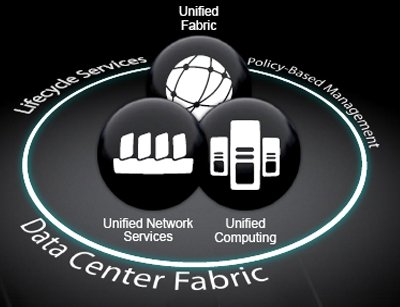Cisco has released its latest fabric play, a combination of unified compute, unified network services and unified fabric it says can allow networks to scale and deliver incremental levels of intelligence.
Changes can be seen across its entire Data Center Business Advantage portfolio, which includes some new additions such as a low latency switch and NX-OS, a new data center operating system.
Accenture and Cisco Business Group global managing director Jack Sepple says its unified product approach creates and end-to-end view of the virtualized data center network down to the virtual machine, reducing total cost of ownership, complexity and improving workload management and security.
"Through our strategic alliance with Cisco, we’ve developed a suite of joint data center solutions which combine Cisco’s advanced technologies with Accenture’s industry-specific process knowledge and expertise," Sepple said.
Cisco’s new switches include the Nexus 3000 and 5500 series. The 3000 offers low-latency connectivity and is particularly developed for high-speed trading while the 5500 builds on the Layer-2 supporting 5000, supporting Layer 3. This makes it suitable for 1GbE, 10GbE, 8GbE fiber channel of FCoE on any of the ports.
Cisco data center solutions director of marketing Craig Huitema said on offer is a new LISP protocol, available firstly with Nexus 7000 and later available with other models.
"With LSIP we basically decouple the locator from the identifier," Huitema said.
"If an IP address needs to move because a virtual machine is [shifting it] from an enterprise data center to a public cloud provider, this IP address can move and LISP will take care of it."
Huitema said Cisco’s definition of the fabric shows its emphasis on the open environment.
"We’re integrating traditionally siloed sets of technologies and organizations," Huitema said.
"They work together sometimes organizationally but a lot of the time it was something that was forced. [With Cisco’s new innovations] there is a reduction of complexity, with that reduction there’s lower cost of ownership."
Also announced today:
• New Nexus 5548UP and 5596UP switches with Unified Port (UP) capability on all ports supporting Layer 2/3 and IEEE 802.1Qbh.
• Fabric Extender Technology which enables customers to build a single, modular fabric that extends from Cisco Nexus switches to Cisco Unified Computing System servers to adapters and to virtual machines.
• Adapter FEX for intelligent bandwidth segmentation to better utilize existing network interface card resources transparent to applications.
• VM-FEX which extends the switching fabric all the way to the server hypervisor to enable IT managers to consolidate the virtual and physical access layers and achieve greater performance.
• FEX support on Nexus 7000 with the Nexus 2232PP, providing high-density 10Gb Ethernet solutions for top-of-rack deployments, offering a single point of management for up to 1,500 ports per chassis.
• Director-Class Multi-hop Fibre Channel over Ethernet which unites data center and storage networks to deliver a single high-performance, highly available and scalable network.
• A new ACE-30 module for dynamic workload scaling with Overlay Transport Virtualization which provides 54% higher performance for application delivery.
• The Nexus 1010 - an NX-OS based appliance platform for hosting virtual services which now supports two additional services: Cisco Virtual Security Gateway (VSG) for VM-level segmentation in a multi-tenant virtualized data center and Cisco Data Center Network Management Center (DCNM).
• The Cisco Unified Computing System C260 M2 Rack-Mount and new versions of Unified Computing System B230 M2, B440 M2, and C460 M2 with improved virtualization performance and reduced latency.

